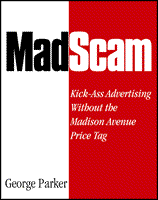 We are wired to tell, read, and listen to stories. A great story gets you to feel as if you were in the story: your senses are engaged, your curiosity is piqued, and your adrenalin is flowing.
We are wired to tell, read, and listen to stories. A great story gets you to feel as if you were in the story: your senses are engaged, your curiosity is piqued, and your adrenalin is flowing.
Marketing is basically the art of telling a story. Simple stories include:
- I had no money. I did this. Now I’m rich.
- I was a loser. This product changed me into the winner I am today.
- I had no clients. I figured out a great technique. My phone hasn’t stopped ringing.
- Boy meets girl. They live happily ever after.
A compelling business story causes the listener to contact the business owner for more information or to make a purchase.
You must deliver the story convincingly. When you tell the story in person, make sure that your voice, tone, tempo, eyes, and body are enhancing your story. If you’re telling the story in print, online, or on television, use images to reinforce the words and reduce the length of the story.
You have different stories for different people. Since one goal of a story is to make the listener feel part of the story, the story needs to “fit”. Carefully consider who you’re telling the story to.
Your story has an arc. Think of a classic fable. It no doubt fits the standard framework: every day… until one day … and then … and then … and ever since then …. For example, in Watty Piper’s The Little Engine that Could:
A little railroad engine was employed about a station yard for such work as it was built for, pulling a few cars on and off the switches. One morning it was waiting for the next call when a long train of freight-cars asked a large engine in the roundhouse to take it over the hill “I can’t; that is too much a pull for me,” said the great engine built for hard work. Then the train asked another engine, and another, only to hear excuses and be refused. At last in desperation the train asked the little switch engine to draw it up the grade and down on the other side. “I think I can,” puffed the little locomotive, and put itself in front of the great heavy train. As it went on the little engine kept bravely puffing faster and faster, “I think I can, I think I can, I think I can”.
Your story includes concrete details. Details allow the listener to visualize the story and engage the senses. Instead of a refrigerator, say “a white, side-by-side ‘fridge, with an ice dispenser in the left door and a wheeze that you can hear when the compressor is working”. Add appropriate details.
Your story is personal. Instead of retelling someone else’s story, it’s better to tell something that happened to you (or that you personally witnessed). A personal story builds trust in the teller.
Your story needs a clear purpose. Ideally, you want to teach the listener in a way that they can validate the message them self.
Your story is easily repeated. Viral marketing is nothing more than people passing along a story that they liked. Make your story memorable and ideally, easily summarized.
Great stories aren’t accidental. You need to practice telling the story. You need to get feedback to make your story effective. Learn from others’ stories.
When you sincerely tell your personal story effectively, you’ll have lots of curious customers wanting to find out more about you and your business.
 We are wired to tell, read, and listen to stories. A great story gets you to feel as if you were in the story: your senses are engaged, your curiosity is piqued, and your adrenalin is flowing.
We are wired to tell, read, and listen to stories. A great story gets you to feel as if you were in the story: your senses are engaged, your curiosity is piqued, and your adrenalin is flowing.

 Ida, my Prussian grandmother, loved talking with friends and family.
Ida, my Prussian grandmother, loved talking with friends and family. Perhaps you’ve already noticed – I overhauled my website. This is my third rewrite of my site.
Perhaps you’ve already noticed – I overhauled my website. This is my third rewrite of my site.